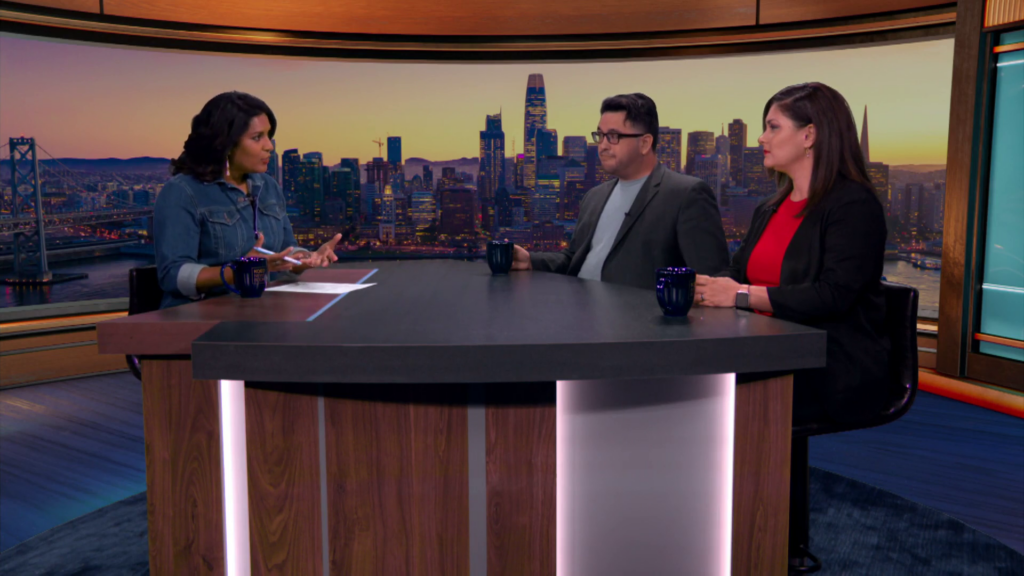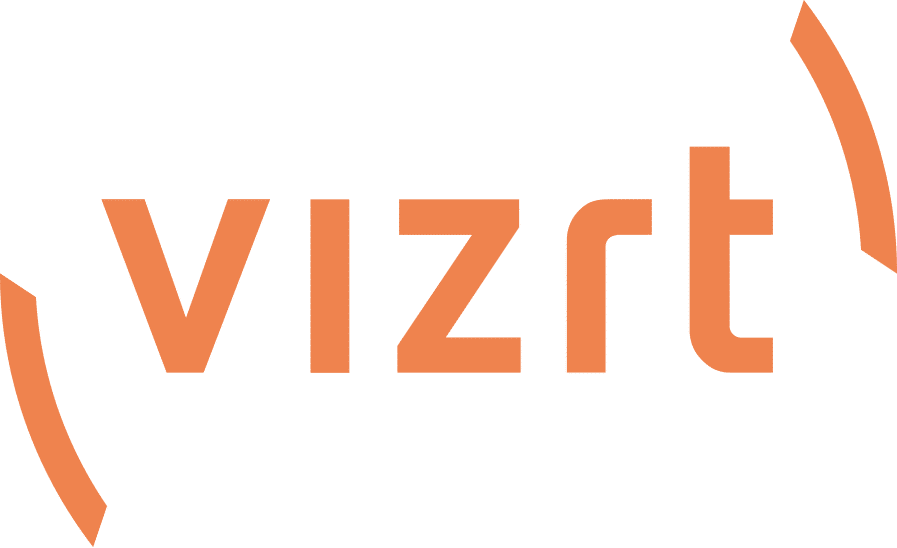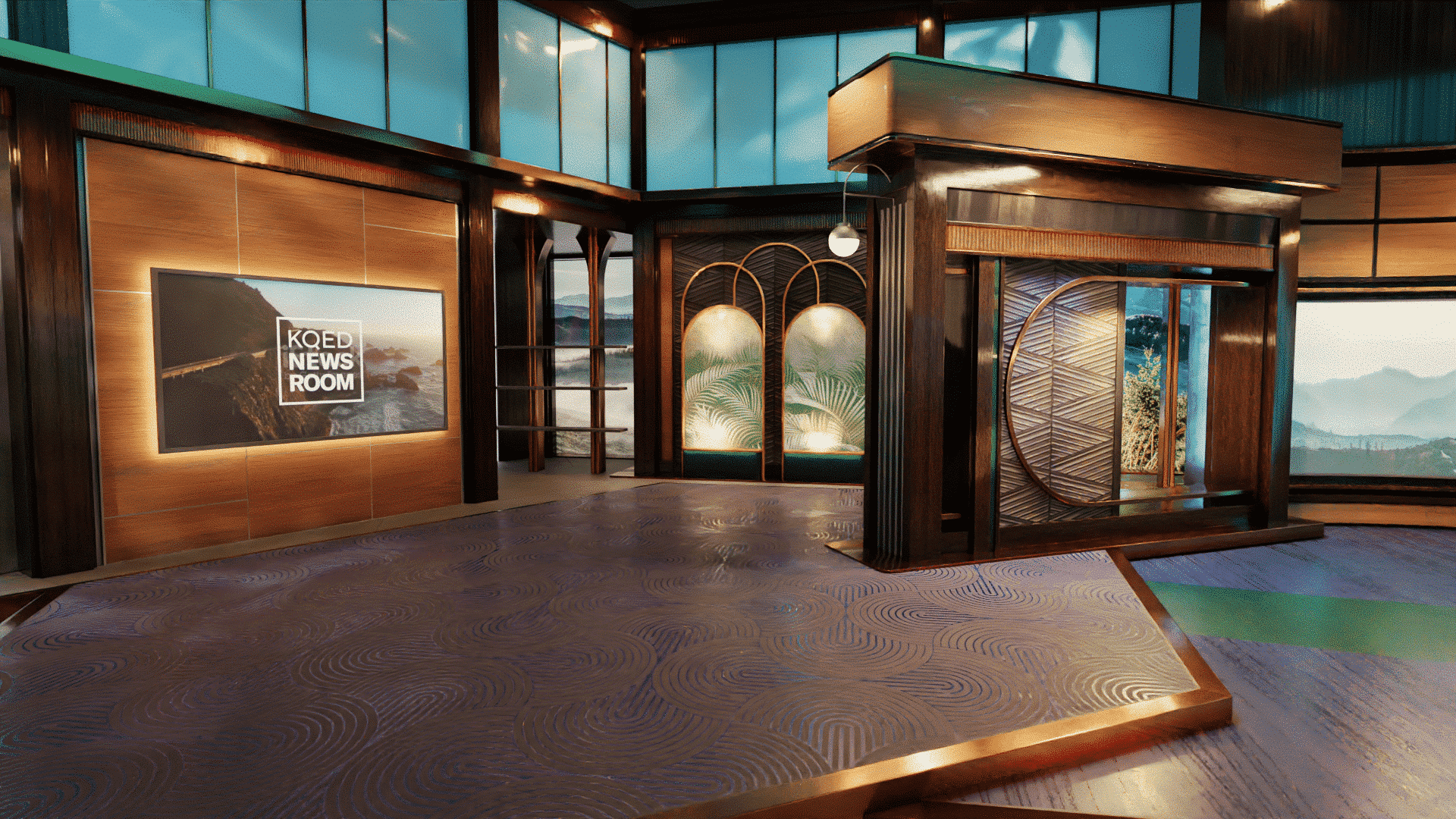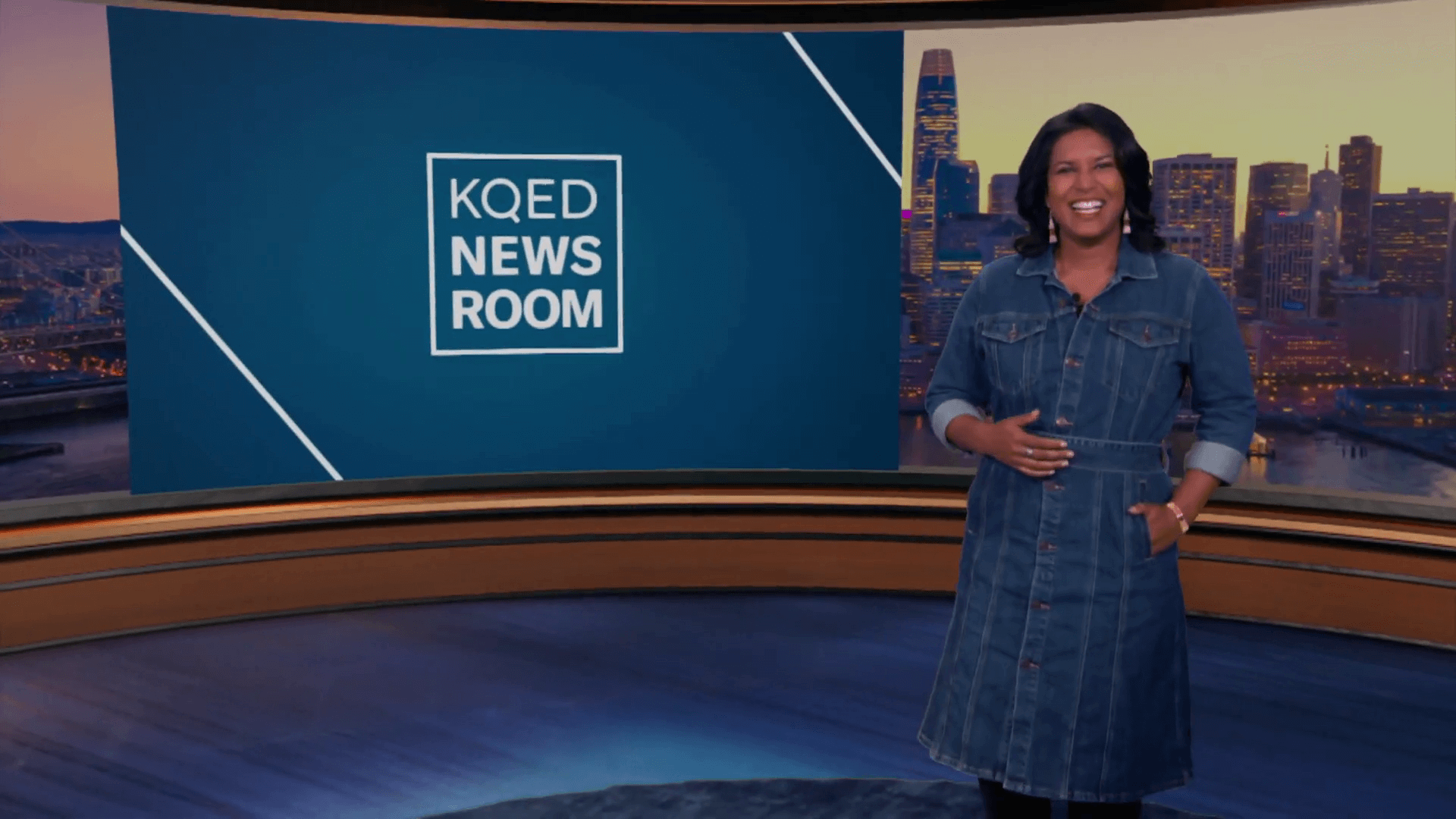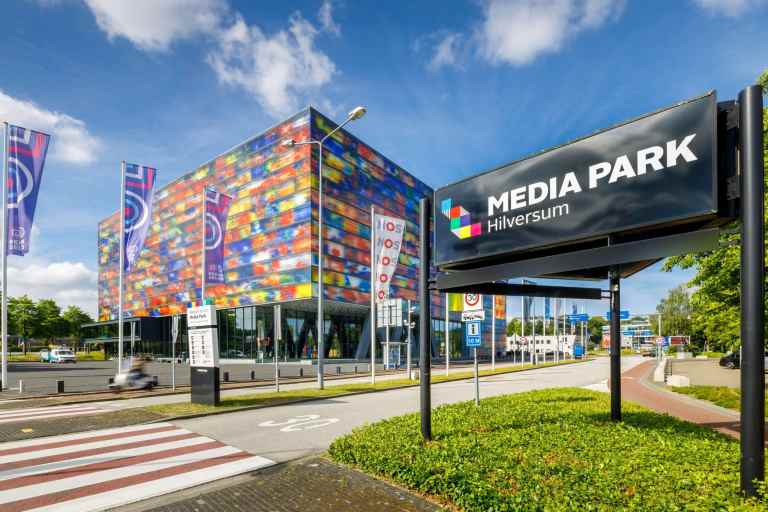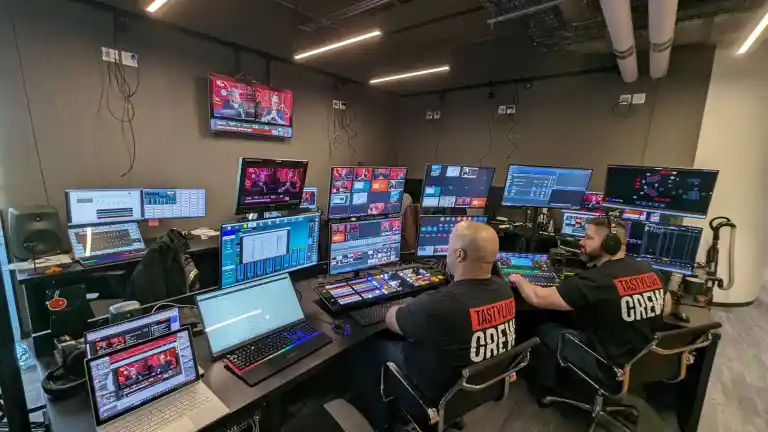Backstory
San Francisco PBS and NPR member station KQED is one of a growingnumber of broadcasters worldwide that are debuting their secondgeneration (and more) virtual sets. Having first approached leading LAvirtual production design agency, Full Mental Jacket (FMJ), to create avirtual set for their pledge drives in 2017, the broadcaster returned to theagency in 2021 when it came time to revisit the concept following a majorbuilding renovation at their headquarters.

Big Challenge
“KQED wanted to create more virtual productions in their new studios,”says Ronen Lasry, Creative Director, FMJ. “As a result, we’ve completedvirtual set designs for the station’s on-air pledge drives, the weeklytelevision news magazine KQED Newsroom, and are just finishing up workfor a third show.”
The new KQED Newsroom set highlights some of the advances madein the virtual set space over the four years since the broadcaster’s firstdeployment of the technology. In addition to the upgrade in quality usingViz Engine 4, one of the standout new features is FMJ’s use of Viz Arc andthe way Lasry handles the keys to iterating and evolving the set to theKQED team themselves.
“We no longer need setup and strike days between different studioproductions using different sets in the same studio,” adds JarrettMcPeek, Director of Technical Operations at KQED. “Unlike many TVnews operations primarily utilizing a single set for daily newscasts, wework with multiple content units – each with their own unique studioproduction needs and sets. In addition to the vast creative opportunitiesof virtual, we were seeking increased operational flexibility andefficiency.”
Viz Arc
Viz Arc is Vizrt’s latest augmented reality control system that allowsusers to drive AR graphics and virtual sets from a single interface. UsingViz Arc within KQED enables Lasry to work the way he prefers, in a truepartnership with the client. The collaborative effort allows Larsy to designand build a virtual set and hand it over to the station along with the toolsto drive the set forward on a day-to-day level. The result is that KQED cannow develop and grow an extremely powerful virtual set in-house withcomparatively little experience – simply leaning on FMJ to assist andprovide high-level expertise when required.
Viz Arc lets collaboration happen more intuitively than before. Now, thebroadcast team can do the simple tasks from inside a GUI and see exactlywhat changes they are making in real-time.
“Everything’s fluid, everything’s live,” comments Lasry. “It’s remarkablysimple to build the controls and KQED is much more unlocked in termsof how they feel like they can play with the set and change things as aresult. I can quickly set up controls and it’s really easy to teach them howto build and modify their shots or set positions, which enables the teamto be more creative. That is the key to making a good show; having theoperators always feel like they have more creative freedom in using theset and not depend on me.”
The use of Viz Engine 4, enabled Lasry and the FMJ team to fulfill adesign brief that Lasry describes as “having a very San Francisco BayArea aesthetic.” The virtual set features dark wood panelling for a lesstraditional news look.
The physical KQED studio includes a rug and custom designed newsdesk— to be used simultaneously or individually— and a set of chairs thatcan be brought in for more informal interview options. The virtual setitself features a mixture of different wood and metal accents along withclassic art-deco patterns, as well as a variety of location and backgroundelements that can be updated and fed dynamically with branded ortopical graphics.
Easy to operate virtual sets for anyone, featuring special guest Full Mental Jacket
Full Mental Jacket recently completed a successful design and delivery of a Viz Engine virtual set to mid-size station KQED in San Francisco.

“Those [wood] textures would definitely have been a challenge in thepast,” he says. “The tools for creating virtual sets have gotten better,though, the baking has gotten better, as well as the ability to fine-tune thedesign. The latest shaders from Viz Engine 4 have opened up the designpalette significantly.”
The virtual set uses Mo-Sys StarTracker for camera tracking and camerarobotics from Vinten, but its Viz Engine 4’s ability to handle moreadvanced real-time rendering techniques than ever before that has raisedthe production standard.
Lasry describes the KQED set as being at the completion of its first phasenow, namely getting everything on air, working and optimized. Thenext stage is where KQED and FMJ truly start to drive their collaborationforward. The teams have plans for more data-driven content and anincreased use of charts and graphs as well as a fourth camera, type,motion graphics, and more. By establishing Viz Arc as a central componentof the workflow, Lasry ensures KQED has more control and greateropportunity to expand the creative usage of the sets – leading to a betteron-screen experience for the station’s many viewers.
“KQED wanted to create more virtual productions in its new studios. As a result, we’ve used Vizrt solutions to complete virtual set designs for the station’s on-air pledge drives, the weekly television news magazine KQED Newsroom, and are just finishing up work for a third show.”
Ronen Lasry
Creative Director, Full Mental Jacket
Designers Full Mental Jacket used Viz Engine and Viz Arc to create an autonomous augmented reality-driven virtual set for San Francisco’s KQED.
When it came time for San Francisco PBS and NPR member station KQED to implement a virtual set in the newly renovated headquarters, the broadcaster and LA-based virtual design agency, Full Mental Jacket (FMJ) turned to Vizrt software-based solutions for operational flexibility and efficiency.
Using Viz Arc and Viz Engine, FMJ’s Creative Director Ronen Lasry ensures KQED has more control and greater opportunity to expand the creative usage of the sets. “KQED wanted to create more virtual productions in its new studios,” says Lasry. “As a result, we’ve used Vizrt solutions to complete virtual set designs for the station’s on-air pledge drives, the weekly television news magazine KQED Newsroom, and are just finishing up work for a third show.”
The use of Viz Engine, enabled Lasry and the FMJ team to fulfill a design brief that Lasry describes as “having a very San Francisco Bay Area aesthetic.” The virtual set features dark wood paneling for a less traditional news look.

